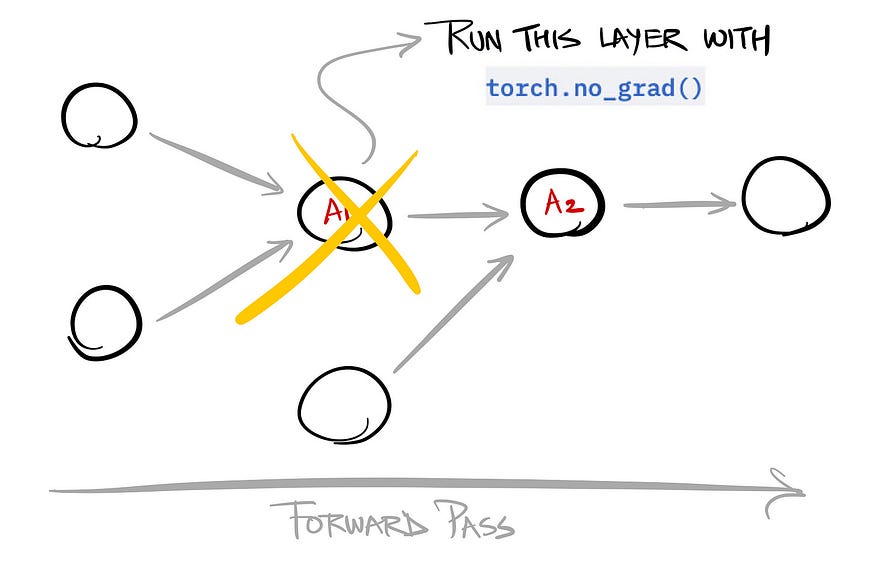
Gradient Checkpointing
Last Updated on July 25, 2023 by Editorial Team
Author(s): Harshit Sharma
Originally published on Towards AI.
To “scale” new heights in model training
Gradient Checkpointing (aka Re-compute technique/activation checkpointing) is an approach that trades compute for memory and is helpful in scenarios where the available GPU memory is not enough to accommodate a large model. It was published originally in 2016 [Link]

In Short #7 U+007C What is Gradient Accumulation ?, we learned how to train a model with a large enough batch size in spite of low GPU memory.
But what if the model is large enough, and we can’t use even a batch size of 1?
Gradient checkpointing helps here by decreasing the memory footprint required for executing the model. So even if a large model outsizes the GPU, we still have a silver lining.
It does this dynamically by NOT storing all the intermediate activations during the forward pass, thereby saving precious memory.
Let’s take an example with a computation graph with A1 and A2 as the intermediate activations.

Instead of pre-computing both A1 and A2, it skips computing A1 during the forward pass.

Running with torch.no_grad() ensures that intermediate activations are not stored for those parameters.
It’s only during the backward pass, that the skipped activations are calculated. And this makes the backward pass slower, but while saving some memory.
The slowdown in speed is 20%, but the memory cost, as per the paper, is transformed as:

Which layers are checkpointed?
It is implemented internally in Pytorch and other deep-learning frameworks. But one of the ideas from the papers recommends:

This is so that the speed of backward passes is not hampered much, and the calculations are still computationally cheap.
How to implement it?
In PyTorch, it has got a simple checkpoint API:

Tensorflow users can checkout here
References:
Hope you enjoyed this !!
Originally Published at Intuitive Shorts:
Short #9 U+007C Gradient Checkpointing
To scale new heights in model training
intuitiveshorts.substack.com
Follow Intuitive Shorts (a Free Substack newsletter), to read quick and intuitive summaries of ML/NLP/DS concepts.

Join thousands of data leaders on the AI newsletter. Join over 80,000 subscribers and keep up to date with the latest developments in AI. From research to projects and ideas. If you are building an AI startup, an AI-related product, or a service, we invite you to consider becoming a sponsor.
Published via Towards AI
Take our 90+ lesson From Beginner to Advanced LLM Developer Certification: From choosing a project to deploying a working product this is the most comprehensive and practical LLM course out there!
Towards AI has published Building LLMs for Production—our 470+ page guide to mastering LLMs with practical projects and expert insights!

Discover Your Dream AI Career at Towards AI Jobs
Towards AI has built a jobs board tailored specifically to Machine Learning and Data Science Jobs and Skills. Our software searches for live AI jobs each hour, labels and categorises them and makes them easily searchable. Explore over 40,000 live jobs today with Towards AI Jobs!
Note: Content contains the views of the contributing authors and not Towards AI.














